
As reported by the Houses & Holes earlier, the Australian Bureau of Statistics (ABS) has released labour force data for the month of September, which reported a seasonally-adjusted increase in the headline unemployment rate to 5.4% from 5.1% in July, but an increase in the total number of jobs across the economy.
The economy added 14,500 jobs (+0.1%) over the month , with the loss of -17,700 part-time jobs more than offset by a 32,100 increase in full-time jobs. Last month’s result was also revised down marginally, from a loss of -8,800 jobs to -9,100 jobs.
The labour force participation rate rose, up 0.2% to 65.2%, which explains the increase in the headline unemployment rate in the face of job gains (see below charts).
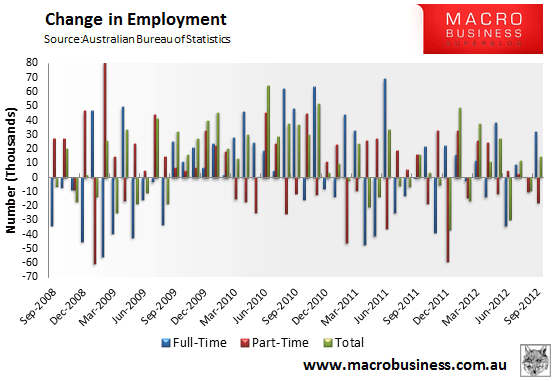
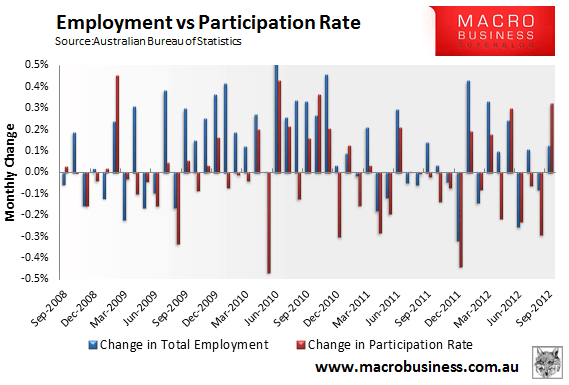
The employment market continues to track sideways; still a reasonable result given the state of the global economy (see below chart).
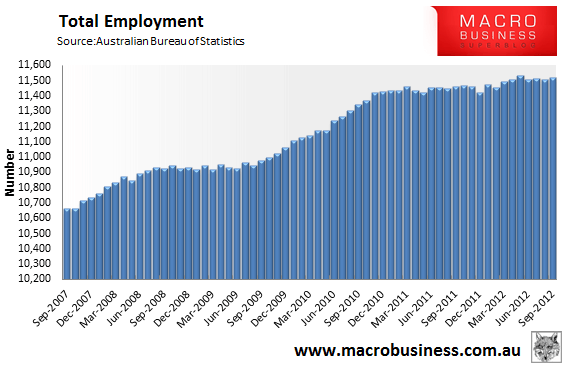
Jobs outcomes were mixed across the states, with reasonable jobs growth in New South Wales, Victoria, and Western Australia, contrasted by poor results in Queensland and Tasmania:
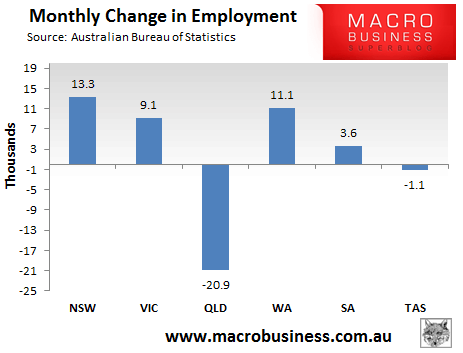
Australia’s employment market remains two speed, with strength in Western Australia masking weakness elsewhere.
Firstly, Western Australia has driven virtually all of the gains in jobs over the past year – a highly unbalanced result:
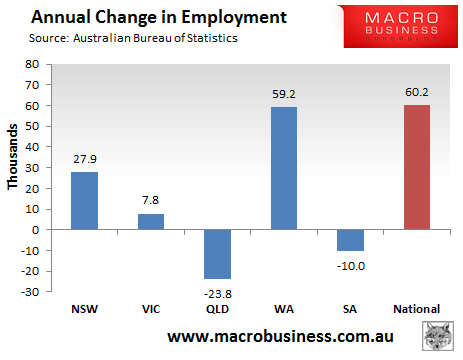
Second, the growth in aggregate number of hours worked has been anaemic in all states, except Western Australia (see below chart).
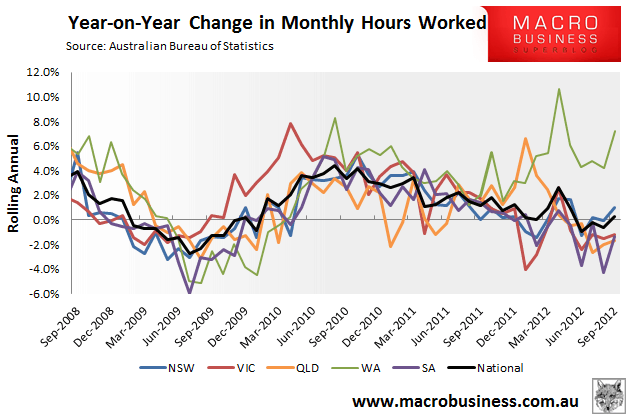
Reflecting the above, Western Australia’s unemployment rate is well below the national average, with New South Wales also doing okay (see below chart).
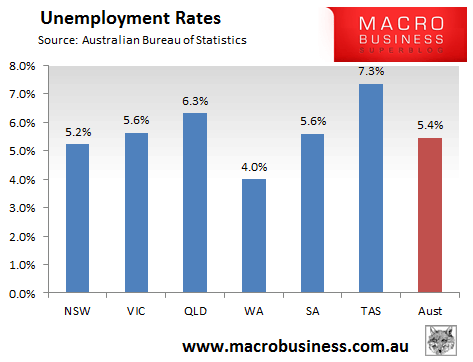
Nationally, the aggregate number of hours worked rose by 0.5%, arresting its recent downtrend (see below chart).
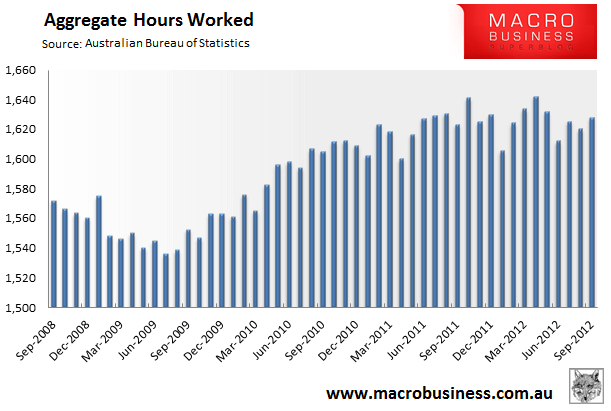
Overall, it’s a mixed report, with the rise in the headline unemployment rate offset by an increase in jobs (mostly full-time) and aggregate hours worked. It’s also disconcerting that the lion’s share of jobs growth over the past year has been confined to just one state – Western Australia – where the mining boom is seemingly coming to an end.
Twitter: Leith van Onselen. Leith is the Chief Economist of Macro Investor, Australia’s independent investment newsletter covering trades, stocks, property and yield. Click for a free 21 day trial.

